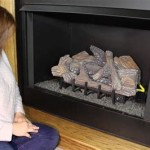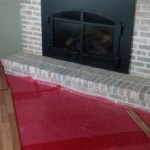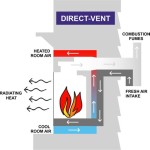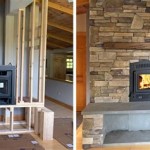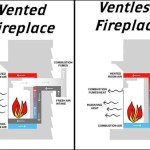Millivolt Rated Wall Switch for Gas Fireplace: Understanding Control and Compatibility
Gas fireplaces offer a convenient and aesthetically pleasing heating solution for homes. Unlike traditional wood-burning fireplaces, gas fireplaces require a control system to regulate the gas flow and ignition. One common and often straightforward method of controlling a gas fireplace is by utilizing a millivolt rated wall switch. This type of switch plays a crucial role in the operation of the fireplace, providing a simple on/off control mechanism. Understanding the functionality, compatibility, and installation of a millivolt rated wall switch is essential for homeowners and HVAC professionals alike.
Millivolt systems are self-powered, meaning they do not rely on external electricity to operate the main gas valve. Instead, a pilot light heats a thermocouple (or thermopile) which generates a small electrical current, measured in millivolts. This current, while small, is sufficient to hold open the main gas valve, allowing the fireplace to operate. When the pilot light is extinguished, the thermocouple cools, the millivolt current ceases, and the gas valve closes, shutting off the gas supply. The wall switch acts as a simple interrupter in this millivolt circuit.
The primary advantage of a millivolt system is its independence from external power. This ensures that the fireplace can operate even during a power outage, providing a reliable source of heat when needed. This feature makes millivolt systems particularly attractive in regions prone to power disruptions. Furthermore, the simplicity of the design contributes to the overall reliability and longevity of the system.
Key Point 1: The Functionality of a Millivolt Rated Wall Switch
A millivolt rated wall switch is essentially a single-pole, single-throw (SPST) switch designed to handle the low-voltage, low-amperage requirements of a millivolt system. It functions as a simple open/close circuit. When the switch is in the "on" position, it completes the electrical circuit, allowing the millivolt current to flow from the thermocouple to the gas valve. This, in turn, allows the gas valve to remain open, enabling the fireplace to operate.
Conversely, when the switch is in the "off" position, it breaks the electrical circuit, interrupting the flow of the millivolt current. This causes the gas valve to close, shutting off the gas supply and extinguishing the flames. The switch does not directly ignite the pilot light; the pilot light must be lit manually or via an integrated igniter system, depending on the fireplace model.
The “millivolt rated” designation is critical. Standard household light switches are designed for higher voltage and amperage and should never be used in a millivolt circuit. Using an incorrect switch could damage the millivolt system components or, at the very least, prevent the fireplace from functioning correctly. The correct millivolt rated switch is specifically designed to operate with the very low electrical current produced by the thermocouple/thermopile.
The wiring associated with a millivolt wall switch is typically low-voltage wiring, often consisting of two wires connected to the switch terminals. These wires connect to the millivolt control unit within the fireplace housing. The wiring is relatively straightforward, but it is essential to follow the manufacturer's instructions carefully to ensure correct installation and prevent damage to the system.
Diagnostic procedures for a malfunctioning millivolt wall switch are generally straightforward. If the fireplace fails to ignite or stay lit, testing the switch for continuity can quickly determine if the switch is functioning properly. A multimeter can be used to check for continuity when the switch is in the "on" position and the absence of continuity when the switch is in the "off" position. If the switch fails this test, it likely needs to be replaced.
Key Point 2: Ensuring Compatibility and Proper Selection
Selecting the correct millivolt rated wall switch requires careful consideration of compatibility factors to ensure proper operation and prevent damage to the fireplace system. Not all millivolt systems are identical, and variations in voltage and amperage requirements may exist. Therefore, consulting the fireplace manufacturer's specifications is crucial before selecting a replacement switch or installing a new one.
The fireplace's owner's manual typically provides detailed information about the required voltage and amperage rating of the wall switch. Using a switch with an incorrect rating can lead to system malfunction or even component damage. It is generally advisable to use a switch specifically recommended by the fireplace manufacturer or a direct replacement that matches the original switch's specifications.
The physical dimensions and mounting style of the wall switch are also important considerations. The switch must fit correctly within the existing wall box and match the aesthetic style of the room. Wall switches are available in various styles, including toggle switches, rocker switches, and push-button switches. Selecting a switch that complements the surrounding decor is important for maintaining the overall aesthetic appeal of the room.
When purchasing a millivolt rated wall switch, it is essential to verify that the switch is certified by a reputable testing laboratory, such as UL (Underwriters Laboratories) or CSA (Canadian Standards Association). Certification ensures that the switch meets established safety standards and has been tested for performance and reliability. Using a certified switch provides added assurance of safety and compatibility.
Furthermore, consider the environmental conditions in which the switch will be used. If the switch is installed in a damp or outdoor location, it is essential to select a switch that is specifically designed for those conditions. Weather-resistant or waterproof switches are available and can provide added protection against moisture and corrosion.
Key Point 3: Installation Procedures and Safety Considerations
Installing a millivolt rated wall switch is a relatively straightforward process, but it is crucial to follow proper safety precautions to prevent electrical shock or damage to the fireplace system. Before beginning any installation work, it is imperative to disconnect the gas supply to the fireplace.
The installation process typically involves removing the existing wall switch, disconnecting the wires from the switch terminals, and connecting the wires to the new switch terminals. It is essential to ensure that the wires are securely connected to the terminals and that the connections are properly insulated. Loose or poorly insulated connections can cause electrical shorts or system malfunctions.
Before connecting the wires, examine them for any signs of damage or wear. If the wires are frayed or corroded, they should be replaced before installing the new switch. Damaged wires can pose a safety hazard and can compromise the performance of the fireplace system.
When connecting the wires to the switch terminals, follow the manufacturer's wiring diagram closely. Incorrect wiring can damage the switch or the fireplace system. If you are unsure about the wiring connections, consult a qualified electrician or HVAC technician.
After connecting the wires, carefully mount the switch in the wall box and secure it with screws. Ensure that the switch is properly aligned and that it operates smoothly. Test the switch by turning it on and off and observing the operation of the fireplace. If the fireplace fails to ignite or stay lit, troubleshoot the wiring connections and consult the manufacturer's instructions.
Safety is paramount when working with gas and electrical systems. If you are not comfortable performing the installation yourself, it is best to hire a qualified electrician or HVAC technician to do the job. A professional technician has the knowledge and experience to ensure that the installation is done safely and correctly.
Finally, after installation, perform a thorough inspection of the fireplace system to ensure that all connections are secure and that there are no gas leaks. Use a gas leak detector to check for leaks around the gas valve and connections. If you detect any gas leaks, immediately shut off the gas supply and contact a qualified gas service technician.
In summary, the millivolt rated wall switch is a critical component in controlling gas fireplaces that utilize a millivolt system. Understanding its function, ensuring compatibility, and adhering to safe installation practices are essential for ensuring the proper and safe operation of the gas fireplace. Proper attention to these details will contribute to the longevity and reliability of the fireplace system, providing years of comfortable and efficient heating.

Wall Switch For Gas Fireplaces Hechler S Mainstreet Hearth Home Troy Missouri

Wall Mount On Off Switch Kit Millivolt Gwms2 01997 F0245

Hargrove On Off Wall Switch For Millivolt Systems Hgws

Hargrove Ws Millivolt On Off Function Wall Switch Us Fireplace

Real Fyre Ws 1 Low Voltage On Off Wall Switch With Cover And Wiring

Fireplace Millivolt Electronic Ignition Valve Kit For Use With A Wall Switch 82k Btu

Gas Millivolt Switch Safety Pilot Control 100 000 Btus Woodland Direct

Gas Fireplace Wall Switch Faq Montigo

Durablow Tr1003 Gas Fire Fireplace On Off Remote Control Kit Thermostat Timer For Millivolt Valve Ipi Module Replaces Wall Switch Or Ca

Fireplace Millivolt Honeywell Electronic Ignition Valve Kit For Use With A Wall Switch 150k Btu
Related Posts

